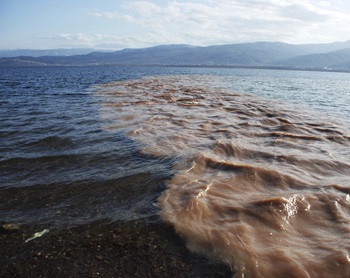Shedding light on sediment spill
At DHI, we constantly look for ways and means to predict the effects of human activities on water environments. Coastal development often involves intensive dredging work.
 At DHI, we constantly look for ways and means to predict the effects of human activities on water environments. Coastal development often involves intensive dredging work. This, in turn leads to sediment spills, which have adverse impacts on the ambient environment. We are currently working on an exciting new project – taking measurements of the marine environment and conducting laboratory experiments to measure the optical effects of dredging work. In so doing, we hope to improve the ability of our computer models to predict possible effects of dredging spills on the marine environment around Singapore.
At DHI, we constantly look for ways and means to predict the effects of human activities on water environments. Coastal development often involves intensive dredging work. This, in turn leads to sediment spills, which have adverse impacts on the ambient environment. We are currently working on an exciting new project – taking measurements of the marine environment and conducting laboratory experiments to measure the optical effects of dredging work. In so doing, we hope to improve the ability of our computer models to predict possible effects of dredging spills on the marine environment around Singapore.
The aim of this project is twofold: 1) to develop a light model for tropical waters and 2) to validate and optimise the model by testing it on field data.
One of the most significant impacts of dredging activities worldwide is the reduced light availability for photosynthesis and growth of pelagic and benthic plants & corals. Our ability to make reliable predictions of the impact of dredging depends on two things – reliable modelling of light attenuation and the response of primary producers to reduced light. The attenuation of light is the combined effect of two processes in the water column – namely the scattering of light and the absorption of light. The combined effect of scatter and absorption of suspended particles on light attenuation varies between and within coastal areas, shelf and offshore seas. In an earlier project, we developed a light attenuation model based on optical properties (absorption and scatter) of chlorophyll, detritus, dissolved organic matter and including four size classes of inorganic suspended solids.
The current project activities are based on the same principles and involve the following:
• Experiments, field sampling and optimisation of MIKE ECO Lab equations to share knowledge and initiate collaboration about light modelling.
• From these experiments, absorption and scatter of sediments will be obtained. The resulting specific attenuation coefficients will be implemented in the MIKE ECO Lab light equation.
• Collection of data from monitoring stations to optimise and validate the description.
The final result will be a comparison of modelled and measured light attenuations.
Read more